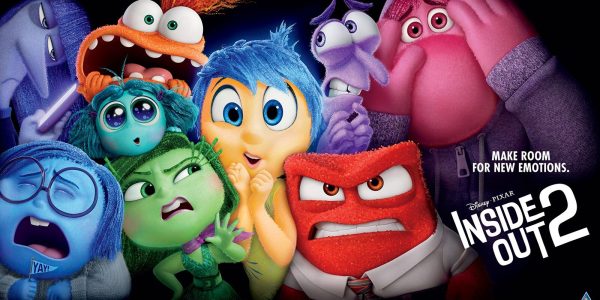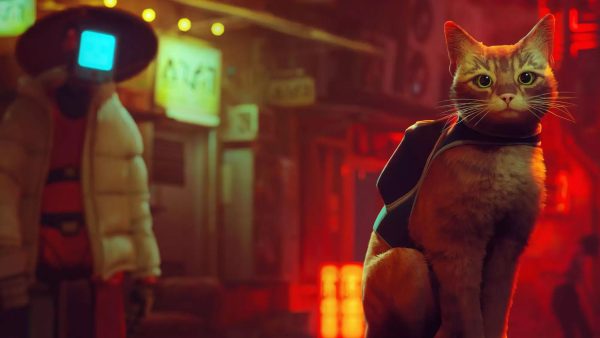Love triangle for the ages
Phantom of the Opera shines as play, movie
The creeper in the basement and a viscount fall in love with a girl belonging to one of the least socially acceptable professions in all of France, causing three hangings, two shattered chandeliers, and one burnt down opera house. I love The Phantom of the Opera, and I have enjoyed listening to the soundtrack for as long as I can remember. I have seen it both as a play and as a movie. I love both, though each for different reasons.
The Phantom of the Opera tells the story of a love triangle between a young chorus girl, Christine; her childhood friend turned suitor, Raoul; and the mysterious masked phantom haunting the opera house.
The music is the best part of Phantom, so it’s important that each production gets it right. In the movie, many of the lyrics are unfortunately spoken instead of sung. In the play, the actors have very harsh voices, but at least they do sing all the lines they are supposed to sing. Butler’s voice sounds too modern to fit the time period, but he still sounds better than Karimloo.
There is no comparison between the play and the movie for the opening scene. It might not have been the play’s fault, but its transition from the gloomy, destroyed opera house to the alive and energetic building of the past is pathetic. The music is still spectacular, though. In the movie, the transformation is one of the best scenes with the loud, dramatic music, the chandelier rising and the opera house coming alive, and how vibrant and full of life it becomes.
In the “All I Ask of You” scene in the movie, I love the contrast between Christine’s white dress and her dramatic red cloak. In the play, Christine’s green cloak covers her much better, but it doesn’t have the same symbolism or fit the color scheme as well. The red and white colors in the movie reflect Christine’s innocence versus her passion. In the movie, the audience gets to see the phantom watch his love pledge her love to another, turning the romantic scene bittersweet.
I absolutely loathe the costumes for “Masquerade” in the movie. The black, white, and gold color scheme is nice and matches the colors from the rest of the movie. The problem is that there can’t be only black and white costumes when the lyrics say “Grinning yellows, / spinning reds.” Masquerade is supposed to be bright and colorful. Christine’s dress is pink, which could have been nice, but it’s such a pale color that is not noticeably different from the white. If she had a red dress in a sea of white and black, that could have been more dramatic, but they completely missed out on that brilliant opportunity.
I much prefer the costumes in the play. There’s a lot of color and you can tell that the characters are actually supposed to BE dressed up as something – the monkey, the skeleton, the fairy. Christine’s dress doesn’t exactly stand out, but it is still pretty and matches the bright colors of the rest of the scene.
The Phantom’s Red Death costume in the movie is the absolute worst! It’s dramatically red, and I like the black makeup around his eyes, which gives his face a slightly skeletal appearance. However, it’s too simple and doesn’t say “death” like it should. Also, he walks down the stairs OFF TEMPO with the music! In an award-winning musical, this is complete heresy! The mask in the play actually looks like a skull, and with the smoke behind him as he makes his entrance, he looks suitably frightening. I don’t love his hat, although it is certainly dramatic. I suppose it covers his awful wig so that I can fully appreciate the rest of his costume.
In the “Past the Point of No Return” scene, I really like the costumes for the Don Juan Triumphant opera in the movie. Christine’s costume makes her look innocent and … not at the same time, which is nice in the context of the story. She looks pretty in the dress, and I love the rose motif presented with the rose in her hair and the ones she carries. The Phantom looks very attractive in his Don Juan costume. His black mask is perfect for the role of Don Juan, even if it doesn’t cover enough of his face to truly hide his deformities. I also like the simplicity of his costume compared with the costume we see Piangi wearing in the play.
I don’t like the costumes in the play as much. Christine’s dress is okay. It’s pretty enough, and it works enough to match the plot of the scene. I don’t like that the Phantom is completely encased in his cloak. It makes for a more dramatic reveal when Christine has to pull off both his hood and his mask; however, it’s hard to believe Aminta (her character) is really in love with the creepy, hooded thing stalking her.
One of the best parts of the play isn’t actually part of the musical. After the actors take their bows, some truly special moments occur. Sarah Brightman, the original actress for Christine in the musical, makes a special appearance and sings “The Phantom of the Opera” along with five Phantoms who represent the past, present, and future of The Phantom of the Opera.” These Phantoms were Anthony Warlow, John Owen-Jones, Colm Wilkinson, Peter Jöback, and Ramin Karimloo, the actor in the production.
I love the end credit song in the movie. The song ends the movie on a somber note, which perfectly fits the ending scene. It helps the audience sympathize with and understand the Phantom’s perspective a bit better. It’s a beautiful, haunting, song. It shows how the Phantom is alone and is doomed to remain in his lonely state, not because of his facial deformity but because of the actions which turned him into a true monster.
In the movie, the audience can easily sympathize with the Phantom despite his nightmarish appearance and actions. Even though he commits murder and abducts Christine, the viewer can still sympathize with his unrequited love. The movie sets are gorgeous and most of the costumes are pretty and fit the scenes. I love the singing in the movie because the singers’ voices aren’t harsh and are generally full of emotion. However, I don’t like that some of the lyrics are cut out and are instead spoken. I prefer how the Phantom looks in the play, but not Christine or Raoul.
In the play, I like that all the lyrics are actually sung and the creativity and color of the Masquerade costumes. I also like that both Notes scenes are included and that the Phantom’s makeup actually makes him look deformed. However, I do not like that the singers’ voices are rather harsh. The set is also way less impressive in the play.
Both the play and the movie are very awe inspiring, and I highly enjoy watching both of them. However, the movie blows the play out of the water. The set pulls the audience into the story and the costumes are rich and beautiful. The viewer can sympathize with the Phantom, improving his depth of character. The singing is good, and the sets are dramatic. I would highly recommend watching The Phantom of the Opera, especially the 2004 movie.
Your donation will support the student journalists of Bryan High School. Your contribution will allow us to purchase equipment and cover our annual website hosting costs.




